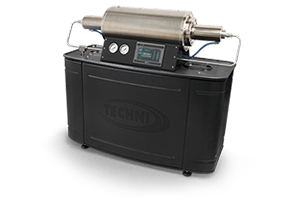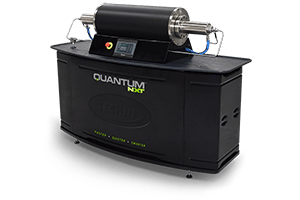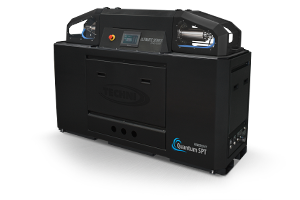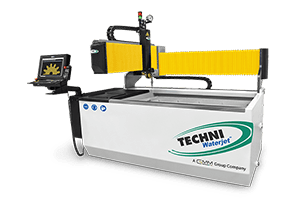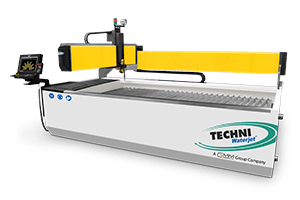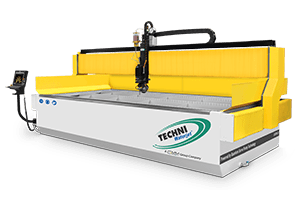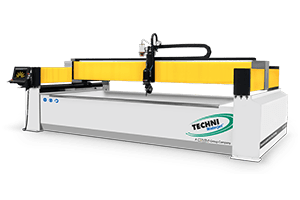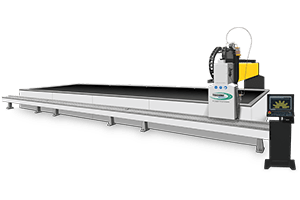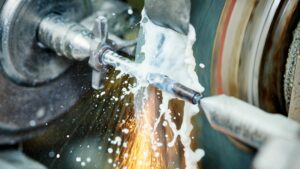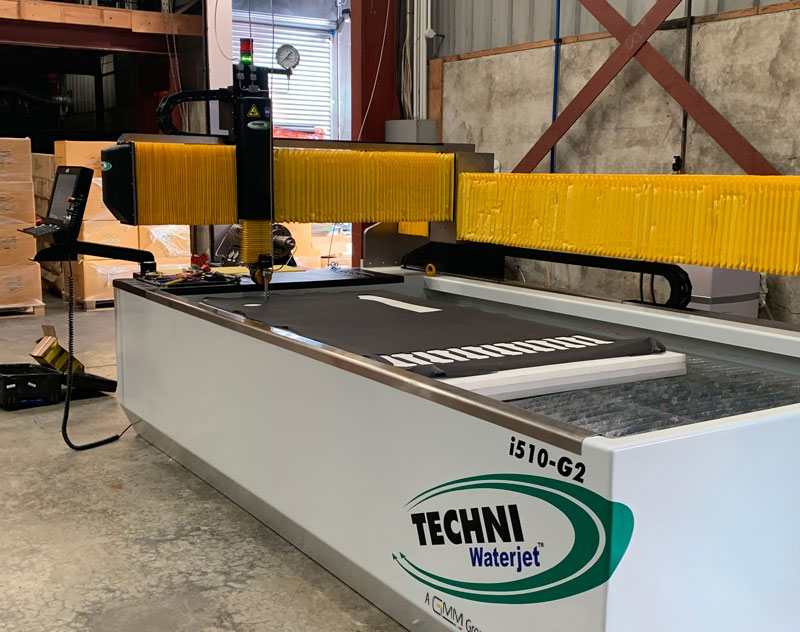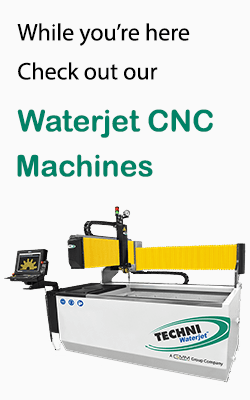Cutting fabric isn’t just a task; it’s an art form where precision, technique, and innovation come together. This guide delves deep into the world of textile and fabric cutting, exploring every facet from its humble beginnings to the high-tech methods of today.
What is Fabric and Textile Cutting?
Fabric cutting, the cornerstone of textile production, is a refined process where fabric is transformed into individual pieces that eventually become integral parts of a garment or textile product. This crucial stage is where precision meets creativity, resulting in patterns that shape the very essence of clothing and textile articles. The cutting process, intricate and varied, involves several methods and techniques, each catering to different needs and types of fabrics.
Brief History of Fiber Cutting
Fabric cutting, tracing its origins back to ancient times, has evolved from basic hand-cutting techniques to sophisticated, technology-driven processes. In the early days, fabric cutting was a manual, labor-intensive task with limited precision and consistency. The introduction of sharper blades and better cutting tools marked the first significant advancements in the field.
Industrial Revolution: A Turning Point
The advent of industrialization was a turning point in the history of fabric cutting. It introduced advanced tools and machinery, revolutionizing textile manufacturing. The industrial era saw the development of specialized cutting tools and machines, designed to handle different fabrics and patterns with greater efficiency and precision.
Technological Advancements in Cutting Machines
With technological advancements, fabric cutting machines have become more refined and capable. Modern cutting machines are equipped with features like computer-aided design (CAD) systems, allowing for precise and consistent cuts. The evolution of cutting machines reflects a shift towards mass production while maintaining the quality of each cut piece.
The Role of Cutting in Textile Production
Throughout history, the role of fabric cutting in textile production has been paramount. The transition from manual cutting to the use of sophisticated machinery has not only increased production efficiency but also enhanced the quality and precision of cuts. Today, fabric cutting is an integral part of the textile manufacturing process, combining traditional techniques with modern technology to meet the diverse requirements of the industry.
How does Fabric Cutting Work?
Understanding how fabric cutting works is essential to grasp the art and science behind the transformation of raw fabric into precisely cut pieces, ready for assembly into garments or textile products. The process involves several steps, each demanding meticulous attention to detail, precision, and technique. Let’s explore this step-by-step journey.
Step-by-Step Process of Fabric Cutting
- Design and Pattern Making: The first step in the fabric cutting process involves the creation of a design, followed by pattern making. Patterns are essentially templates representing different parts of the garment or textile product. These patterns are carefully designed to ensure proper fit and style, considering factors like size, shape, and the nature of the fabric.
- Fabric Selection: Selecting the right fabric is critical. The choice of fabric influences the cutting technique used, as different fabrics, from delicate silks to sturdy canvas, have varying cutting requirements. Factors such as texture, stretchability, and thickness play a significant role in the selection process.
- Laying and Spreading: The fabric is laid out on the cutting table, ensuring it is free from wrinkles and aligned correctly. Spreading the fabric evenly is crucial for consistency and accuracy in cutting. This stage often involves multiple layers of fabric being spread to facilitate bulk cutting.
- Marking and Placing the Pattern: Once the fabric is laid out, the next step is to mark the fabric using the patterns. Pattern pieces are carefully placed on the fabric, optimizing fabric usage and minimizing waste. Markers, typically made using CAD systems, guide the cutting process, ensuring precision.
- Cutting: This is where the actual cutting of the fabric takes place. Depending on the requirements, various cutting tools and machines are used. From manual scissors for smaller projects to sophisticated fabric cutting machines like Eastman cutters for larger volumes, the choice of tool depends on the project’s scope and the fabric’s nature.
- Quality Check and Sorting: After cutting, each piece is checked for accuracy and quality. This step ensures that all pieces meet the design specifications and are free from defects. Once approved, the cut pieces are sorted according to their place in the final product assembly.
- Preparation for Sewing: The final step involves preparing the cut pieces for sewing or assembly. This includes tasks like marking seam allowances, notches, and other relevant details that aid the sewing process.
What are the Different Methods of Fabric Cutting?
Fabric cutting, a pivotal process in textile and garment production, employs various methods, each underpinned by distinct technologies and suited for specific applications. We’ll explore these methods in-depth, focusing on their technological aspects and practical applications.
Manual Cutting
Scissors: The most traditional method, utilizing hand-operated scissors for precision and control. This method is ideal for custom tailoring, where intricate cuts and attention to detail are paramount. The technology is simple but requires skilled craftsmanship.
Rotary Cutters: Employing a wheeled blade, rotary cutters offer more speed and efficiency than scissors. They are commonly used in crafting and quilting, where they can quickly cut straight lines or gentle curves on both thin and thick fabrics.
Die Cutting
Die cutting uses a pre-shaped die to stamp out fabric pieces. This method is efficient for producing identical shapes in large quantities. The technology behind die cutting involves leveraging pressure and sharp edges to cut through multiple layers of fabric, making it a staple in mass production.
Band Knife Cutting
A band knife, a continuous loop blade, offers precision in cutting complex shapes, especially in thicker materials like upholstery. This method combines the precision of manual cutting with the efficiency of machine operation. The blade moves vertically, allowing for intricate cuts without shifting the fabric.
Straight Knife Cutting
Straight knife cutting employs a vertically operated sharp blade, suitable for cutting multiple layers of fabric. The technology is simple yet effective, providing speed and versatility. It is a common method in garment factories for its ability to handle large volumes of fabric.
Laser Cutting
Laser cutting, a highly precise method, uses a concentrated beam of light to cut through fabric. This method is particularly advantageous for several reasons:
- Precision and Intricacy: Laser cutting is renowned for its ability to produce extremely precise cuts, making it perfect for intricate designs. For instance, in the fashion industry, laser cutting is used to create detailed lace patterns and complex cut-outs in high-fashion garments.
- Edge Sealing: Particularly beneficial for synthetic fabrics, the laser cutting process melts and seals the edges of the fabric, preventing fraying. This feature is essential in industries where the fray resistance of fabric edges is crucial, such as in the production of flags or banners.
- Customization and Flexibility: Laser cutters, often controlled by CAD software, allow for easy customization of designs. This adaptability makes it a favored choice in bespoke fashion and custom textile artistry.
- Speed and Efficiency: Compared to traditional cutting methods, laser cutting is significantly faster, especially for complex patterns. This speed does not compromise the quality of the cut, making it a time-efficient option for businesses.
Water Jet Cutting
Water jet cutting employs a high-pressure stream of water, sometimes mixed with abrasives, to cut fabrics. The waterjet cutting method is particularly suitable for certain situations:
- Delicate Fabric Handling: Water jet cutting is exceptionally gentle on the fabric, making it an ideal choice for delicate or heat-sensitive materials like silk, lace, or even leather. The absence of heat during cutting means there’s no risk of burning or melting the fabric.
- No Material Distortion: Since there’s no physical contact with the fabric and minimal force applied, water jet cutting ensures the fabric’s properties, like weave and texture, remain unaltered. This precision is vital in custom tailoring or haute couture, where the integrity of the fabric is paramount.
- Environmental Safety: Water jet cutting is environmentally friendly, as it does not produce harmful fumes or byproducts. This aspect is increasingly important in sustainable and eco-conscious textile production.
- Versatility: Apart from textiles, water jet cutters can handle a variety of materials, including composites, plastics, and metals, making them versatile tools in a production setting that handles diverse materials.
Ultrasonic Cutting
Ultrasonic cutting uses high-frequency vibrations to cut and simultaneously seal the edges of synthetic fabrics. This technology is particularly useful in applications where fraying edges are a concern, such as in the production of non-woven fabrics and synthetic textiles.
Computer-Controlled Knife Cutting
Advanced computer-controlled systems guide a knife blade to cut fabrics based on digital patterns. This technology offers unparalleled precision and consistency, ideal for complex patterns and high-volume production. The integration of computer-aided design (CAD) software allows for quick adjustments and customization.
H3: What is the Role of Computerized Fabric Cutting?
Computerized fabric cutting has revolutionized the textile industry, bringing a higher degree of precision, efficiency, and versatility to the cutting process. Let’s delve into how this technology works, its different methods, and analyze its benefits and drawbacks.
The Process of Computerized Fabric Cutting
Computerized fabric cutting involves using computer-aided design (CAD) software to direct the cutting process. The essential steps include:
- Design Input: Patterns are designed or imported into CAD software.
- Digital Layout: The software lays out the pattern on a virtual representation of the fabric to maximize material usage and reduce waste.
- Machine Setup: Fabric is placed on the cutting table, and the machine is programmed with the cutting specifications.
- Precision Cutting: A computer-controlled blade or laser precisely cuts the fabric following the digital pattern.
Methods of Computerized Fabric Cutting
There are various methods within computerized fabric cutting, each with unique applications:
- Laser Cutting: Uses a laser beam to cut through fabric, ideal for intricate patterns and synthetic materials.
- Knife Cutting: Employs a sharp blade controlled by the computer to cut the fabric. It’s versatile and can be used for a range of materials.
- Water Jet Cutting: Utilizes high-pressure water, suitable for delicate fabrics to prevent material damage.
- Plasma Cutting: Involves using a plasma torch, mostly for high-strength materials like leather or thick canvas.
Benefits of Computerized Fabric Cutting
Computerized cutting offers numerous advantages:
- High Precision and Consistency: Ensures each piece is cut exactly to the specifications, crucial for quality control.
- Efficiency and Speed: Reduces cutting time significantly, especially beneficial for large-scale production.
- Flexibility in Design: Easy to adapt and change patterns, facilitating customization and prototyping.
- Material Optimization: Reduces waste through efficient layout and material usage.
- Safety: Reduces the risk of accidents as the process is automated.
Drawbacks of Computerized Fabric Cutting
Despite its advantages, there are some limitations:
- Initial Investment: The cost of acquiring and setting up computerized cutting machines can be high.
- Technical Skill Requirement: Operating these machines requires training and technical know-how.
- Maintenance and Upgrades: Regular maintenance and software updates are necessary to ensure optimal performance.
- Limitation with Thick Layers: Some computerized cutting machines may struggle with very thick layers of fabric.
Which Fabric Cutting Method is Best?
The “best” fabric cutting method depends on various factors, including the type of fabric, the complexity of the pattern, production volume, and budget. For instance, laser cutting is ideal for intricate designs on synthetic fabrics, while die cutting is more suited for high-volume production of simple shapes. Ultrasonic cutting is preferred for synthetic materials needing edge sealing.
What is the Most Common Fabric Cutting Method?
The most common fabric cutting method in mass garment production is straight knife cutting. This method balances efficiency, versatility, and cost-effectiveness, making it suitable for a wide range of fabrics and patterns. Its widespread use in the industry is attributed to its ability to handle large volumes and varied fabric types efficiently.
What Machines are Used to Cut Fabric?
In the realm of fabric cutting, a variety of machines are employed, each offering unique advantages and suited for specific applications. Here’s a detailed look at the types of machines used in fabric cutting:
- Straight Knife Cutting Machine
- A versatile and commonly used machine in the garment industry, featuring a straight blade that moves upwards and downwards to cut fabric stacks.
- Advantages: Ideal for cutting thicker stacks of fabric; offers flexibility for different shapes and patterns.
- Band Knife Cutting Machine
- Similar to a band saw, this machine uses a continuous loop blade for cutting. It’s highly precise and suitable for intricate cuts.
- Advantages: Offers excellent control and accuracy, especially beneficial for complex patterns and shapes.
- Die Cutting Machine
- Utilizes a die or a shaped cutter to stamp out shapes from fabric. It’s efficient for repetitive, identical shapes.
- Advantages: High efficiency in mass production; ensures uniformity of cut pieces.
- Laser Cutting Machine
- Employs a high-powered laser to cut fabrics, guided by computer-controlled systems for intricate designs.
- Advantages: Provides extreme precision; ideal for synthetic fabrics where it also seals the edges to prevent fraying.
- Water Jet Cutting Machine
- Uses a high-pressure water jet, often mixed with abrasives, to cut fabric. It’s effective for delicate or heat-sensitive materials.
- Advantages: Prevents heat damage to fabrics; allows for precise and intricate cutting without altering fabric properties.
- Ultrasonic Cutting Machine
- Utilizes high-frequency sound waves for cutting fabrics, primarily synthetic ones, and simultaneously seals the edges.
- Advantages: Perfect for materials that fray easily; offers clean, sealed edges.
- Rotary Cutting Machine
- Features a rotating circular blade, ideal for quick and efficient cutting of straight lines or gentle curves.
- Advantages: Fast and easy to operate, suitable for medium to high-volume projects.
- Computer-Controlled Knife Cutting Machine
- Description: Advanced cutting machines that are guided by computer-aided design (CAD) systems, ensuring high accuracy and repeatability.
- Advantages: Offers high precision and efficiency, particularly valuable for complex patterns and large-scale production.
Types of Fabrics Used in Fabric Cutting
The world of fabric cutting encompasses a wide range of materials, each with unique characteristics and challenges. Here’s a comprehensive list of fabrics commonly used in fabric and textile cutting, with descriptions and common challenges encountered during the cutting process:
Cotton
A natural fiber known for its breathability and versatility. Cotton is used extensively in a variety of garments.
- Challenges: Cotton can fray easily; precise edge cutting is crucial. It also tends to shrink, so pre-shrinking before cutting is recommended.
Silk
A luxurious, delicate fabric known for its smooth texture and sheen.
- Challenges: Silk is prone to slipping and shifting during cutting, requiring careful handling. Water jet cutting is often preferred to maintain its delicate nature.
Wool
A natural fiber known for its warmth and durability, used in heavier garments like coats and suits.
- Challenges: Wool can be thick and difficult to cut through multiple layers. Sharp blades and proper laying techniques are necessary.
Polyester
A synthetic fabric favored for its strength and resistance to wrinkling and shrinking.
- Challenges: Polyester’s synthetic nature means it can melt or distort under high temperatures. Laser cutting is ideal as it also seals the edges.
Denim
A sturdy cotton twill fabric used primarily for jeans and casual wear.
- Challenges: Denim’s thickness requires strong, sharp cutting tools. Consistency in cutting multiple layers can be challenging.
Leather
A durable and flexible material created by tanning animal hides, used in a variety of fashion items.
- Challenges: Leather cutting requires precision and can leave rough edges. Laser cutting is effective for its ability to seal edges and cut detailed designs.
Lace
A delicate fabric known for its intricate patterns and open weave.
- Challenges: Lace is fragile and can be damaged easily; laser cutting is preferred for its precision and ability to handle intricate patterns without physical contact.
Lycra/Spandex
Known for its exceptional elasticity, used in activewear and swimwear.
- Challenges: Its stretchiness can cause issues in maintaining shape during cutting. Specialized stretch-resistant cutting tables and techniques are needed.
Velvet
A luxurious fabric with a distinctive soft pile, used in formal wear and upholstery.
- Challenges: Velvet’s pile can be crushed or damaged during cutting. Careful handling and appropriate cutting techniques are necessary.
Canvas
A heavy-duty, plain-woven fabric, used for items like bags, shoes, and tents.
- Challenges: Canvas’s thickness requires powerful cutting tools. Consistency in cutting through multiple layers is essential.
What Fabric is the Hardest to Cut?
Leather is often considered the hardest fabric to cut due to its thickness and toughness. Its unique texture requires specialized sharp tools or high-precision cutting machines like laser cutters to achieve clean and accurate cuts without damaging the material.
What Fabric is Easiest to Cut?
Cotton is generally the easiest fabric to cut, owing to its relative softness and uniform texture. It can be smoothly cut with standard cutting tools like scissors or rotary cutters, making it a preferred choice for beginners and professionals alike in various textile projects.
What are the Requirements for Effective Fabric Cutting?
Effective fabric cutting is crucial in textile production, requiring a blend of precision, technique, and appropriate technology. The following criteria are essential for achieving effective fabric cutting:
- Precision in Cutting
- Precision is paramount in fabric cutting to ensure the final product meets design specifications. This involves:
- Using advanced cutting technology like laser or ultrasonic cutters for intricate designs.
- Regular calibration of machines to maintain consistent accuracy.
- Employing skilled operators who understand the intricacies of different fabrics.
- Precision is paramount in fabric cutting to ensure the final product meets design specifications. This involves:
- Support of the Lay
- Proper support of the lay, or the spread of fabric, is crucial for consistent cuts. This requires:
- Ensuring even and tension-free spreading of fabric to avoid distortions.
- Utilizing air-floating tables or automated spreading machines for uniform fabric lay.
- Proper support of the lay, or the spread of fabric, is crucial for consistent cuts. This requires:
- Clean Edge Cutting
- Achieving clean edges in cut fabric pieces is essential for quality. To ensure this:
- Opt for laser cutting for synthetic fabrics, as it seals edges and prevents fraying.
- For natural fabrics, sharp, well-maintained cutting tools are essential to achieve clean edges.
- Achieving clean edges in cut fabric pieces is essential for quality. To ensure this:
- Minimizing Fabric Waste
- Efficient fabric utilization is critical in cutting. This can be achieved by:
- Implementing nesting software to optimize pattern layout.
- Training staff in efficient pattern placement and fabric utilization techniques.
- Efficient fabric utilization is critical in cutting. This can be achieved by:
- Adjustment for Fabric Types
- Different fabrics require different cutting approaches. This involves:
- Understanding the properties of various fabrics and adjusting cutting techniques accordingly.
- Choosing the right cutting tool for the fabric type, such as rotary cutters for thick materials or water jet cutters for delicate fabrics.
- Different fabrics require different cutting approaches. This involves:
- Adaptability to Design Changes
- The ability to adapt to design modifications is crucial. This requires:
- Flexible cutting systems that can quickly adjust to new patterns or design changes.
- Integrating CAD systems for rapid prototyping and design alterations.
- The ability to adapt to design modifications is crucial. This requires:
- Operator Safety and Training
- Ensuring the safety of operators is non-negotiable. This involves:
- Regular safety training and strict adherence to safety protocols.
- Using cutting machines with built-in safety features to minimize the risk of accidents.
- Ensuring the safety of operators is non-negotiable. This involves:
- Maintenance of Cutting Equipment
- Regular maintenance of cutting tools and machines ensures longevity and consistent performance. This includes:
- Scheduled servicing of machines.
- Regular sharpening and replacement of blades and cutting surfaces.
- Regular maintenance of cutting tools and machines ensures longevity and consistent performance. This includes:
- Efficient Workflow Integration
- The cutting process should integrate smoothly into the overall production workflow. This requires:
- Synchronizing cutting schedules with other production stages to minimize bottlenecks.
- Ensuring seamless communication between the design, cutting, and sewing departments.
- The cutting process should integrate smoothly into the overall production workflow. This requires:
- Quality Control Measures
- Implementing quality control checks at various stages of the cutting process to ensure standards are met. This includes:
- Regular inspection of cut pieces for accuracy and quality.
- Feedback mechanisms to adjust processes based on quality assessment findings.
- Implementing quality control checks at various stages of the cutting process to ensure standards are met. This includes:
What are the Common Challenges in Fabric Cutting and How to Overcome Them?
Fabric cutting, though a critical process in textile manufacturing, comes with its set of challenges. Understanding these challenges and implementing practical solutions is key to ensuring efficiency and quality. Let’s explore the common challenges and their solutions:
Inaccuracy in Cutting
Inaccuracies can stem from outdated equipment, human error, or improper fabric alignment.
Solution: Regular training for operators, investing in the latest cutting technology, and implementing quality control measures at each stage can significantly reduce inaccuracies.
Handling Delicate Fabrics
Besides damage, delicate fabrics can also shift or bunch up, leading to misshapen cuts.
Solution: Using low-pressure cutting methods like water jet cutting, which offer control without direct contact with the fabric, can prevent these issues. Employing air-floating tables for fabric spreading can also reduce fabric distortion.
Maintaining Cutting Speed
High-speed cutting can sometimes lead to overheating of equipment, affecting its efficiency.
Solution: Regular maintenance of cutting machines, using appropriate cutting speeds for different fabrics, and scheduling periodic breaks can help maintain optimal cutting speeds without overburdening the equipment.
Fabric Distortion
Stretchy fabrics like knits can pose additional challenges in maintaining shape during cutting.
Solution: Along with tension-free handling, using automated cutting systems with fabric stabilization features can ensure better control over stretchy materials.
Cutting Multiple Layers
Misalignment in multi-layer cutting can lead to size variations in garment parts.
Solution: Using programmable cutting machines that can adjust pressure and speed based on fabric thickness and layer count can ensure uniformity across all layers.
Managing Small Pieces
Small pieces can be challenging to hold steady during cutting, leading to inaccuracies.
Solution: Vacuum tables or sticky mats can be used to keep small pieces in place. Laser cutting systems with fine-tuned control settings are also effective for small parts.
Edge Fraying
Edge fraying can be more pronounced in loosely woven fabrics.
Solution: Beyond laser and ultrasonic cutting, using fray-check solutions or starching the edges before cutting can minimize fraying in these types of fabrics.
Cutting Pattern Alignment
Misalignment in pattern cutting can lead to aesthetic issues and material wastage.
Solution: Using digital pattern matching technologies and ensuring precise fabric feed into the cutting machine can greatly improve alignment accuracy.
How to Choose the Right Fabric Cutting Machine?
Selecting the right fabric cutting machine is a crucial decision that can significantly impact the efficiency and quality of your textile production.
An example can be a small boutique specializing in custom-designed garments that might opt for a rotary cutter for its versatility and ease of handling different fabric types, along with a small computer-controlled cutter for more intricate designs. On the other hand, a large-scale garment manufacturing unit would benefit more from high-efficiency laser or die cutting machines, tailored to handle large volumes.
Below are key criteria to consider, accompanied by practical examples for a clearer understanding.
Type of Fabric
Different fabrics require different cutting technologies. For example, laser cutting machines are ideal for synthetic fabrics as they can seal the edges, preventing fraying. In contrast, delicate fabrics like silk may benefit from waterjet cutting machines, which avoid heat damage.
Production Volume
For high-volume production, automated cutting machines like computer-controlled knife systems are efficient. In contrast, for bespoke tailoring or small-scale projects, manual cutting tools like scissors might be more appropriate.
Precision Requirements
If your projects involve intricate designs, precision cutting machines like laser cutters are indispensable. An example is the fashion industry, where detailed patterns are crucial.
Budget Constraints
The cost of fabric cutting machines varies significantly. While laser cutters offer precision, they can be expensive. For smaller budgets, simpler machines like straight knife cutters might be more feasible.
Space Availability
Some fabric cutting machines require significant space. For instance, large automated cutting tables might not be suitable for smaller workshops, whereas handheld rotary cutters or small die-cut machines can be more practical.
Ease of Use and Maintenance
Consider the skill level required to operate the machine and the maintenance it needs. For instance, CO2 laser cutting machines might require more technical expertise and maintenance compared to simpler rotary cutters.
Adaptability and Versatility
Machines like computer-controlled cutters offer versatility to handle various fabrics and patterns. In contrast, die cutting machines are less adaptable but more efficient for repetitive shapes.
Energy Efficiency and Safety
Evaluate the energy consumption and safety features of the machine. Ultrasonic cutting machines, for example, are energy-efficient and safer compared to high-powered lasers.
Conclusion
Navigating the intricate world of fabric cutting reveals a fusion of art and science. The journey from a simple pair of scissors to advanced laser and water jet cutters underscores the remarkable progress in textile production. Precision, innovation, and skill intertwine in this essential stage of textile manufacturing, reflecting the industry’s commitment to quality and efficiency.
Whether it’s creating delicate patterns or handling massive production volumes, fabric cutting remains a testament to human ingenuity and technological advancement, shaping the very fabric of our daily lives.
